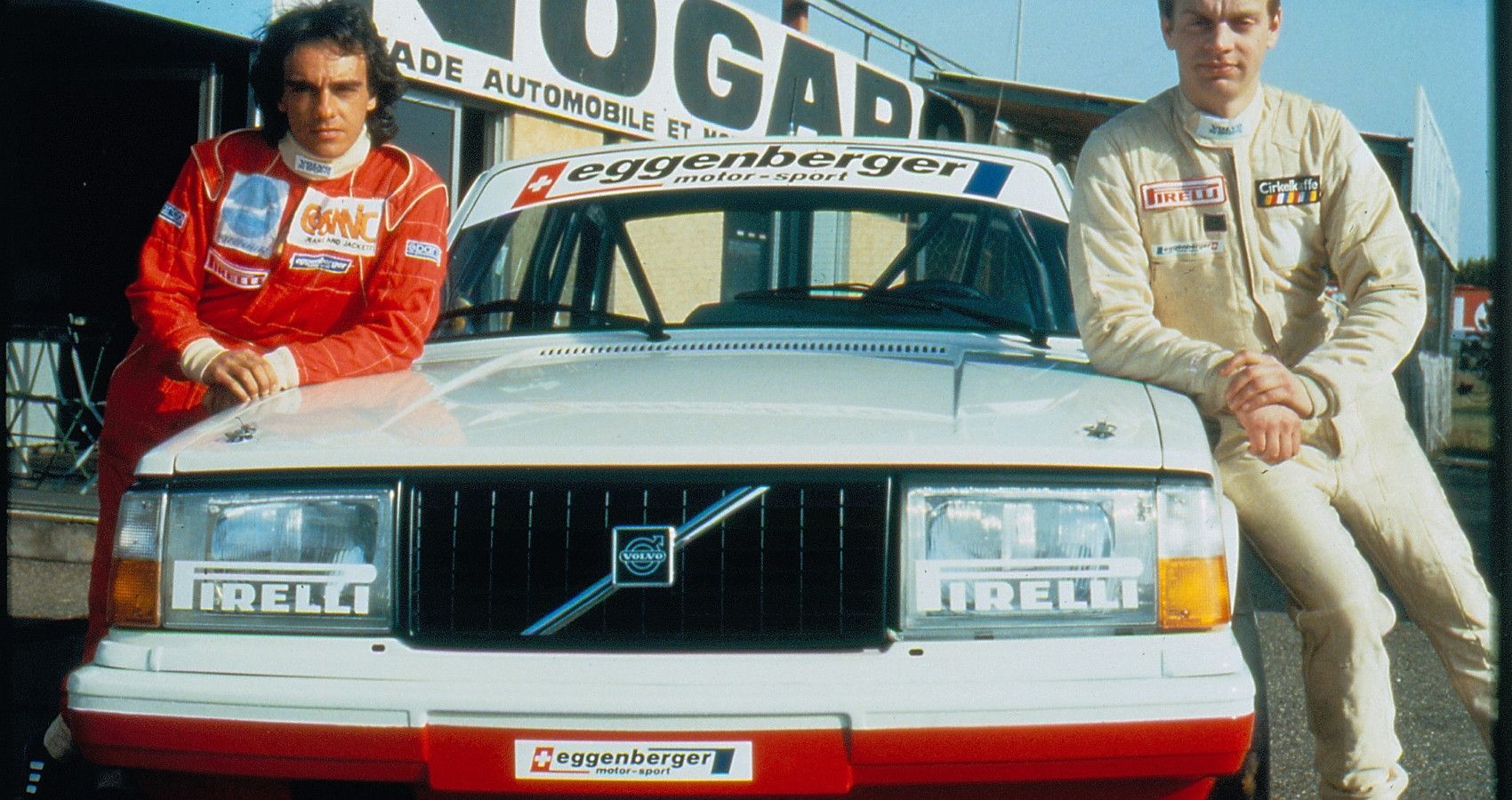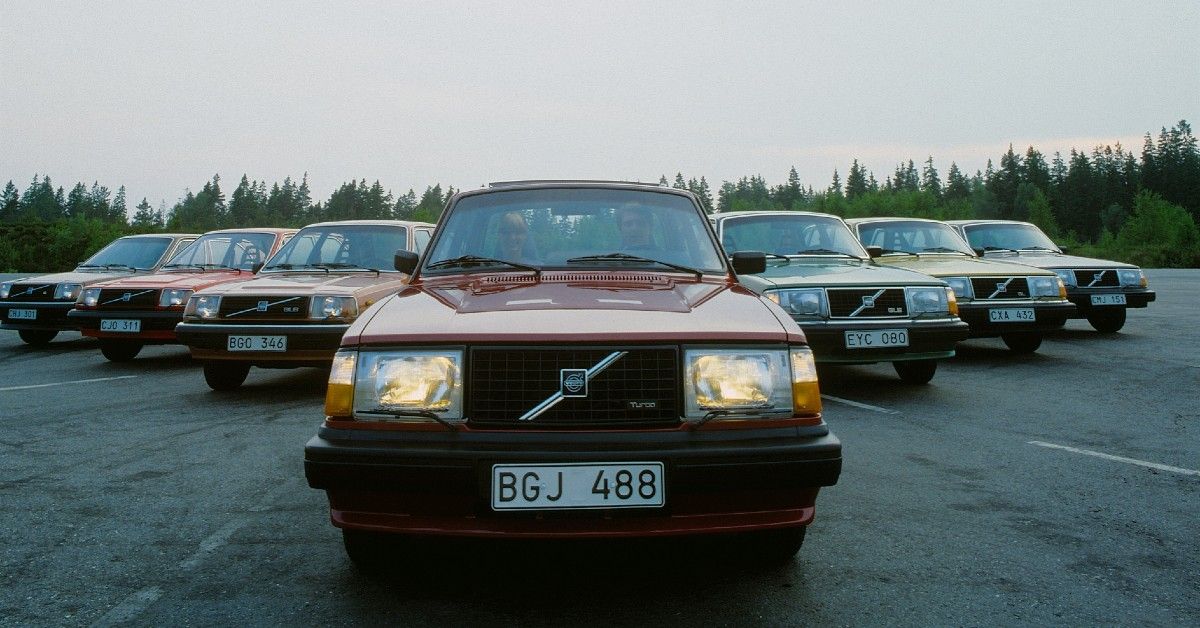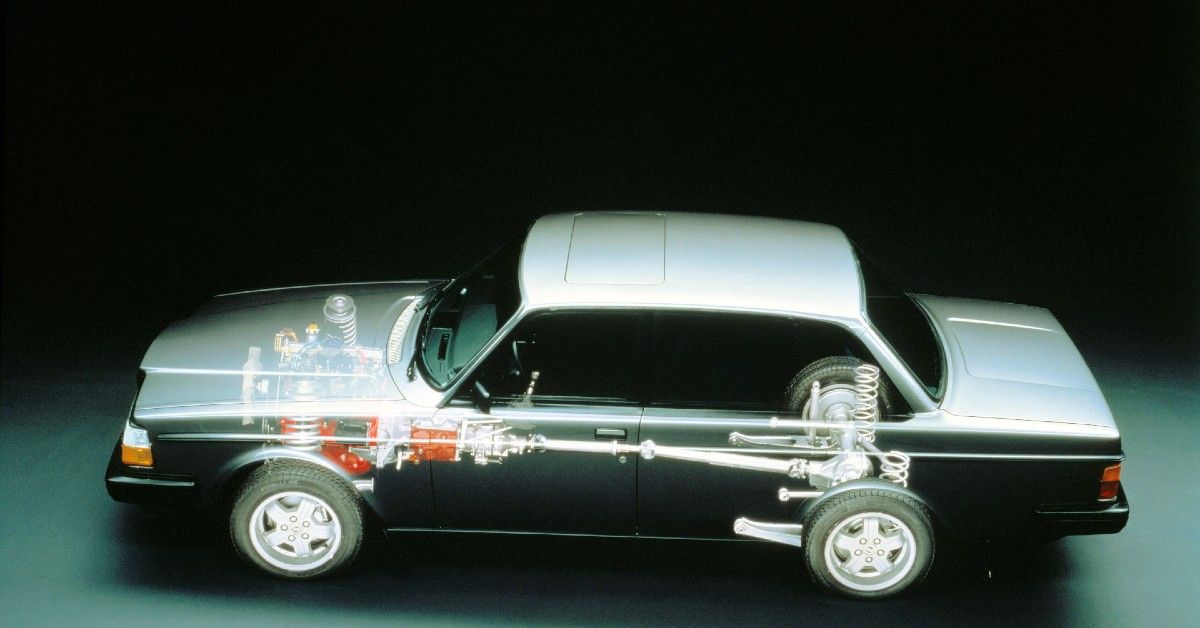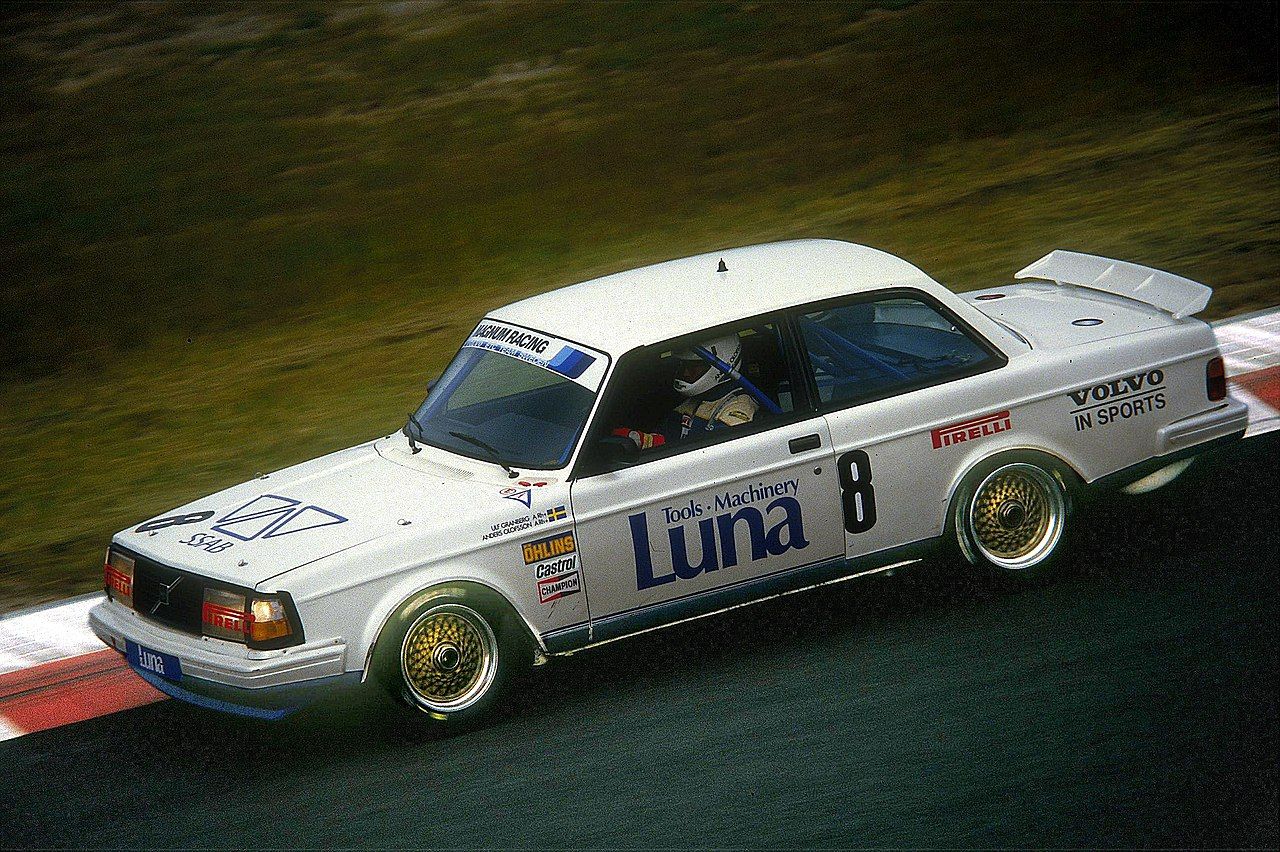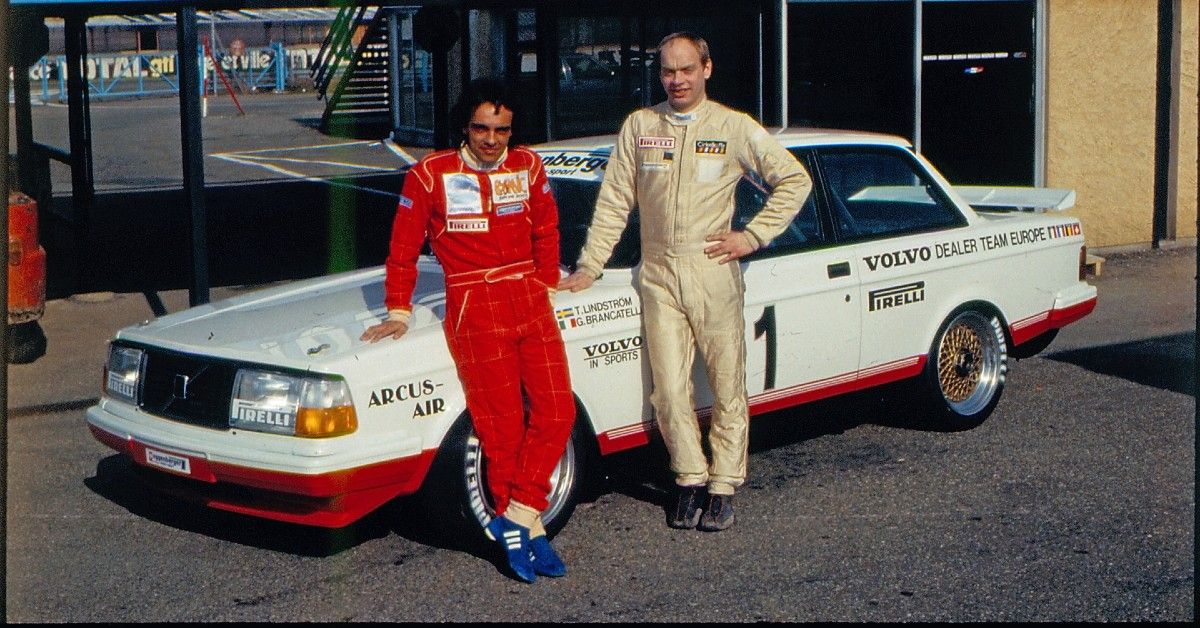Volvo has built a lasting reputation for family-friendliness and passenger safety, but it did so at the expense of intrigue. People saw the Volvo brand as dull but reliable transportation. Looking back, the Volvo 240, of the Volvo 200 series, was the first model to open the proverbial money bag for the Swedish automaker, earning the marque a lot of money in the 1970s.
Naturally for Volvo, the 240 maintained its reputation for safety and reliability, a considerable advantage considering that the North American market accounted for more than 50% of Volvo’s export. However, the 240 is special because it was more than just another “dull but reliable” Volvo. It was among the early pioneers of powerful and efficient turbocharged engines 40 years ago.
The same goes for the Volvo 245 station wagon, the first of its kind to tote a turbocharged gas mill. In that period, F1 cars and some sports cars rocked turbocharged engines, but the turbocharged Volvo 240 sparked the beginning of a new era, thanks to the 2.1-liter Volvo B21ET four-cylinder engine producing 153 horsepower.
Overview of The Volvo 200 Series
Volvo Cars produced and sold more than 2.8 million Volvo 200 Series (or 240 and 260 Series) vehicles globally between 1974 and 1993. The series got designed by Jan Wilsgaard, the same designer responsible for the design of the 1966 – 1974 Volvo 140 Series, on which Volvo based the 200 series.
This is how you know a successful model — Volvo continued to produce the 200 Series concurrently with the Volvo 700 Series that came later in 1982 and lasted until 1992. And when the time came for retirement, only the 260 got replaced by the 700 while the 240 stayed due to persisting demand, which resulted in Volvo continuing to advertise the 240 Series alongside the 700 for another ten years. In fact, the 240 still cruised the market a year after the 700 withdrew from production and got replaced by the Volvo 900 Series in 1992.
The Volvo 240 Turbo would finally retire on May 14, 1993, just short of 20 solid years in the production line, with roughly 2.7 million out of the 2.8 million in total sold. The Volvo 240 and 260 Series were first offered as seven different 240 Series models and two different 260 Series models started in the fall of 1974. The 260 Series came as a coupé, four-door sedan, or station wagon, while the 240 Series arrived as a sedan or station wagon.
Cosmetically, the 200 resembled the previous 140 and 164 since they shared similar bodywork. But unlike the 140 and 160, the 200 Series fielded many experimental safety features of the 1972 Volvo VESC ESV prototype. Large front and rear end crumple zones significantly increased driver and passenger safety in the case of a collision. Additionally, Volvo updated the engine from a straight-six to a V6 and changed the engine technology to OHC.
How Fast Is The Volvo 240 Turbo?
The Volvo 240 Turbo sedan has a peak speed of 153 horsepower at 5,500 rpm and 177 lb-ft of torque at 3,750 rpm. It could vroom from rest to 62 mph in 9.0 seconds. The model got nicknamed the ‘Flying Brick’ because rivals typically managed to cover the 62 mph distance in 11 seconds. In fact, Volvo was so concerned about veering away from its long and hard-earned reputation for safety that it fell back to making slower models, including the 1.9-liter inline-four “B19” engine and the 2.1-liter inline-4 “B21” engine.
They were the first available engines on the 200 Series and could make a humble 97 to 100 horsepower. The poorer power output got compounded by the car's weight of around 3,000 lbs. Even so, the B20 and B21 provided excellent torque ratings and were perfect for cold startups, especially in the snowy parts of Sweden. As the oil crisis erupted, Volvo introduced a 240 powered by a Volkswagen diesel engine that, though it made a lowly 81 horsepower, was rock-solid and kept Americans moving.
How The Volvo 240 Turbo Reigned Over The 1980s Racetracks
The 240 Turbo made its first serious foray into Group A racing in 1984. Volvo focused on building the cars and ensuring all the necessary parts were on par, while independent teams raced them in the competition. The first year yielded two victories for the teams and, of course, the Volvo brand. Ulf Granberg and Robert Kvist from Sweden won the ETC race at Zolder, Belgium, while Per Stureson from Sweden won the DTM race at the German Norisring circuit in the first year.
The Volvo 240 cemented its racing prowess at the Estoril track in Portugal on October 13, 1985. Thomas Lindström and Gianfranco Brancatelli took home the European Touring Car Championship when Volvo won six of the 14 events. Additionally, after one victory and five podium places, Per Stureson captured the German DTM title.
Furthermore, Volvo won the touring car championships in Finland, Portugal, and New Zealand in 1985 as well as the ETC and DTM. In the same year, a right-hand drive 240 Turbo won the Scottish rally championship, making 1985 the most successful race outing for Volvo.
Why Gearheads Love The Volvo 240 “Flying Brick” Turbo
The Volvo 240, although not particularly nimble, was formidably fast on a straight road, consistently topping 162 mph during competitions. It caused quite a stir in the racing world during its initial outings, and later earned the nickname “The Flying Brick.” Teams laud the Volvo 240's dependability, great tuning potential, and impressive capacity to weather sport and time-related damages or wear.
A Volvo ad in the USA compared ‘The Turbo By Volvo’ to Italian supercars. The reason for the three-year lapse from its debut in 1977 until production was that Volvo subjected the engine to a stress test every day by the Swedish police. Even the then CEO and President of Volvo, Pehr Gyllenhammar, personally tested the model before signing off on its production. The Volvo 240 Turbo ended up enlisted by police authorities in many countries.
The Volvo 240’s four-cylinder mill burned less fuel than its V6 big brother, propelling the Volvo 264. At a 9 second 0-60 acceleration, even the station wagon was briefly the top-speed champion among station wagons. The oil crisis and the 55 mph US Highways speed limit are why Volvo didn't announce the top speed rating for the 240 Turbo, focusing instead on acceleration.
Thus, the Volvo 240 Turbo pioneered downsizing engines in favor of maximized efficiency. Volvo made available a 1.9-liter turbo four-cylinder unit (B19ET) for markets with tax-friendly policies for an engine capacity below 2 liters.
As always, the Volvo 240 enjoyed the marque’s key selling points, including solidity, safety, reliability, and roomy interior, all proudly demonstrated over the years.

